Introduction
Although it was commonly thought that the domestic dog (Canis lupus familiaris) descended from its closest living relative, the grey wolf (Canis lupus), scientists now believe that the dog and the grey wolf actually evolved separately from an unknown and extinct wolf species.1https://www.scientificamerican.com/article/how-wolf-became-dog/ To this day, researchers are still investigating the origins of dog domestication. It is likely that a group of wolves realised that hanging around people made it easier to survive as they could scavenge the food waste. Over time, the wolves became less fearful and tamer and the journey to becoming ‘man’s best friend’ began.2https://www.cbc.ca/documentaries/the-nature-of-things/how-dogs-and-humans-became-best-friends-1.6788531
Fascinating facts
The most popular pet
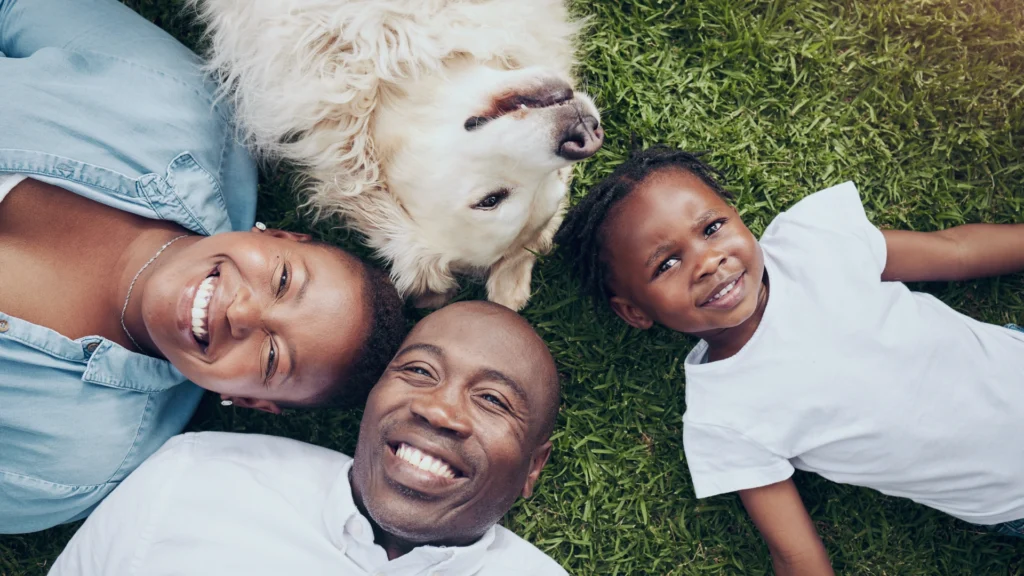
The fact that dogs are the world’s most popular pet proves what a wonderful animal they are. There are around 900 million dogs on the planet3https://www.dogster.com/lifestyle/how-many-dogs-are-there-statistics and a third of all households across the globe have at least one dog in the family.4https://worldpopulationreview.com/country-rankings/most-popular-pets-by-country This is not surprising considering how loving, loyal and adorable dogs can be! If you’ve never had a close relationship with a dog, you’re missing out.
A breed for every occasion

There are 339 officially recognised dog breeds, but there are probably even more.5https://www.psychologytoday.com/gb/blog/canine-corner/201305/how-many-breeds-dogs-are-there-in-the-world The English Mastiff is the largest dog breed in the world, weighing in at around 16 stone and reaching two and a height of two and a half feet while standing on all fours.6https://www.forbes.com/uk/advisor/pet-insurance/largest-dog-breeds/ The biggest dog in the world was an English Mastiff called Zorba who weighed over 24 stone and measured 8 feet and 3 inches from nose to tail.6https://www.forbes.com/uk/advisor/pet-insurance/largest-dog-breeds/ At the other end of the spectrum is the Pomeranian, which only weighs three to seven pounds and reaches six inches tall, while standing on all fours.7https://www.forbes.com/uk/advisor/pet-insurance/smallest-dog-breeds/
Clever dogs

Dogs are social and are extremely clever animals, with intelligence on a par with a two year-old child (although some would argue dogs are even smarter than that!). They can understand up to 200 words, can count, and can trick other dogs and people to get treats,8https://www.apa.org/news/press/releases/2009/08/dogs-think Just like people and other primates, dogs can solve complex problems and can operate simple machines!8https://www.apa.org/news/press/releases/2009/08/dogs-think Not only do dogs beat cats to the top spot of the world’s favourite pet, but it turns out they’re smarter too!9https://www.nationalgeographic.com/animals/article/dog-cat-brains-neurons-intelligence-study-spd
The super power of smell
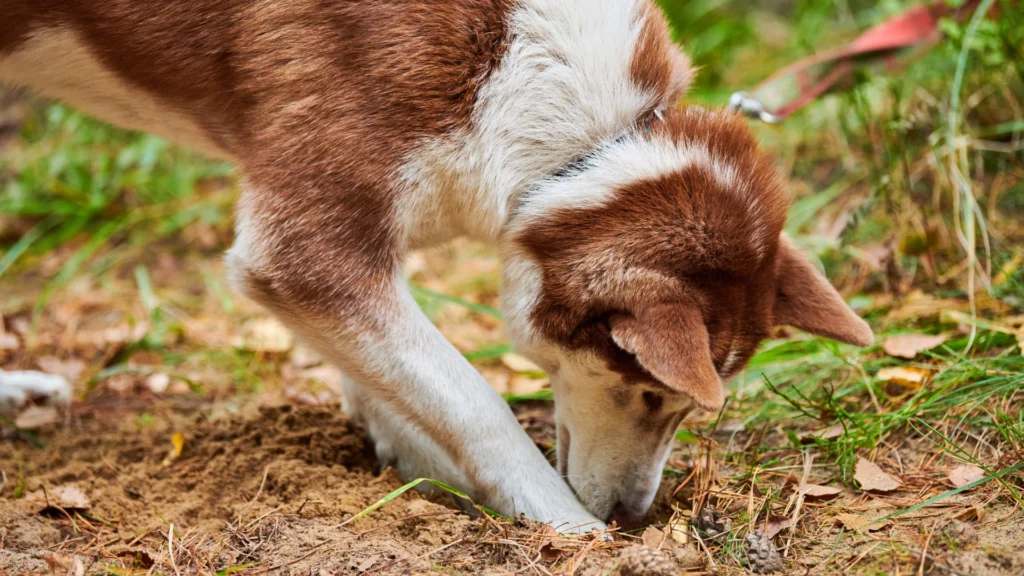
A dog’s nose is 40 times more sensitive than a person’s10https://www.natgeokids.com/uk/discover/animals/general-animals/dog-facts/ and smell is their main sense for navigating the world. Dogs can follow a scent trail days after they are left and can be trained to detect any smell so are often used to detect hidden drugs and explosives by the police. They can even detect illnesses inside a human body and some breeds are trained to detect some types of cancer.11https://www.ncbi.nlm.nih.gov/pmc/articles/PMC8388720/ 12https://www.dogster.com/dog-breeds/what-dog-breeds-can-smell-cancer
Hot dogs

Unlike humans, dogs don’t sweat through their skin. They can only sweat through their paws and have to cool down by panting. This method isn’t as effective as humans which is why you should never leave a dog in a hot place because they can easily overheat.
Dog gods
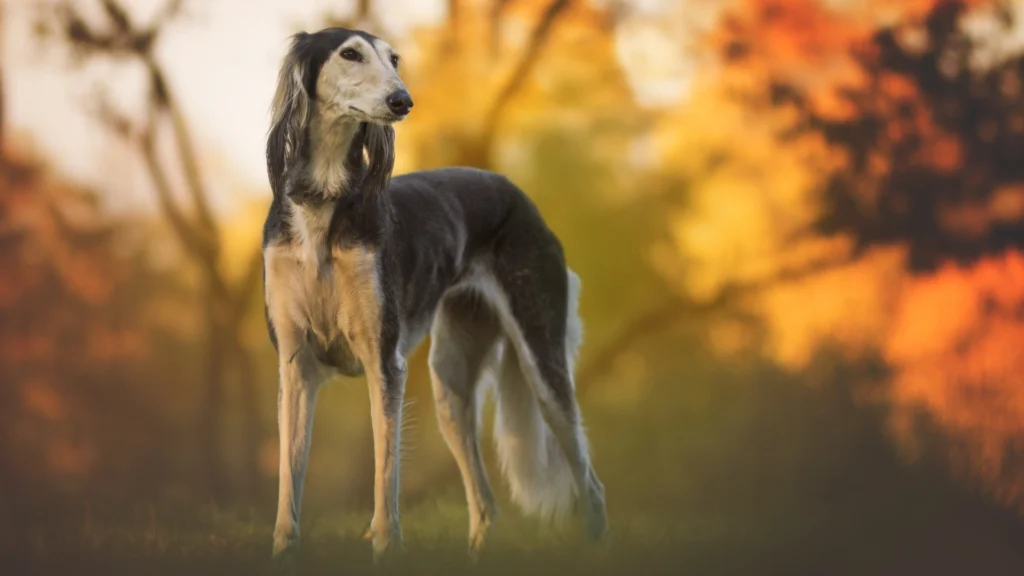
The ancient Egyptians didn’t just worship cats, they worshipped dogs too. Anubis was a god represented by a jackal – a member of the dog family – who helped guide people into the afterlife when they died. The Saluki breed of dog is one of the oldest breeds and were kept by ancient Egyptians in royal palaces.10https://www.natgeokids.com/uk/discover/animals/general-animals/dog-facts/ There are even tomb paintings of people walking their dogs on leads just like we do today.13https://www.worldhistory.org/article/1031/dogs-in-ancient-egypt/
Doggy language

Dogs are very expressive animals and use body language, facial gestures and sounds to communicate with other dogs and people.14https://www.ncbi.nlm.nih.gov/pmc/articles/PMC6116041/ As dogs have been living alongside humans for 30,000 years, they have developed clever ways to communicate with us. For example, when a dog’s tail is held high it usually signals confidence and playfulness but when it is held low or between their legs, the dog is usually scared and anxious. Of course, we all love the sight of a happy and excited dog wagging his or her tail energetically. Dogs have many other subtle ways to communicate too, including the position of their ears, eyes and head. Everyone who has had a dog in the family will recognise the guilty look on a dog’s face when they’ve done something naughty!
Puppy power!
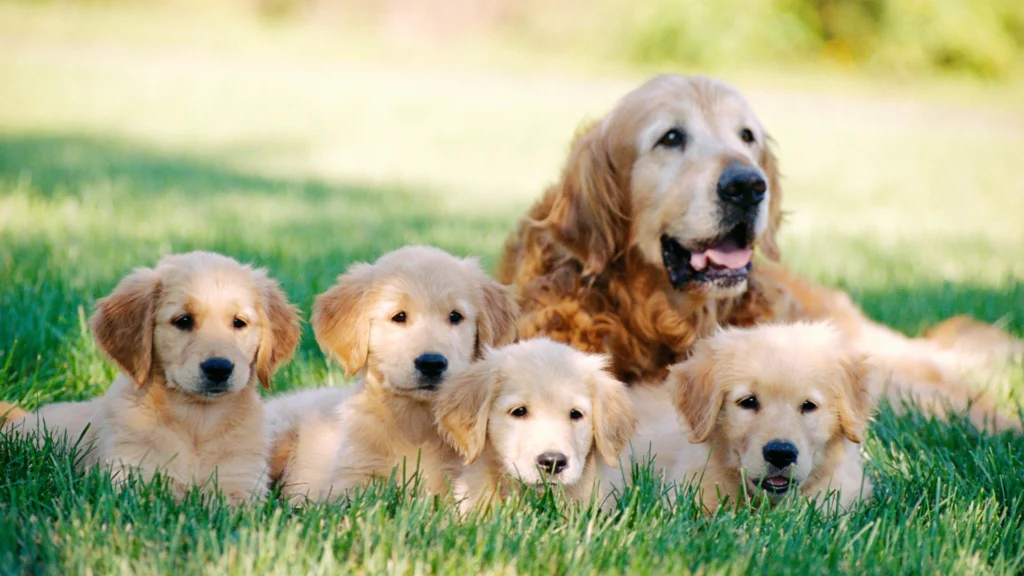
Dogs can be old enough to reproduce from about six months old, depending on the breed. Smaller dogs usually have fewer puppies (two or three) while larger dogs tend to have more – as many as 10!15https://www.britannica.com/animal/dog/Reproductive-cycle The pregnancy lasts about 63 days. Puppies are born deaf and blind so they rely on touch and taste and are completely dependent on their mother. For the first couple of weeks, they don’t do much except feed and stay warm. Between two to four weeks, the puppies start to develop their sense of hearing and smell, and their teeth start to come through. After six to eight weeks, the puppies start becoming more independent and reach peak playfulness and cuteness.16https://www.eukanuba.com/au/puppy/puppy-articles/puppy-development-stages-and-behaviour-into-adulthood
An unbreakable bond

The bond between human and dog is arguably the strongest and most special bond between two different species. Dogs have an amazing ability to understand humans – even more so than our closest primate relatives.17https://www.nature.com/scitable/topicpage/genetics-of-dog-breeding-434/ Dogs’ incredible ability to be taught new tricks means they have become very valuable to us – think guide dogs, sheep dogs, rescue dogs and police dogs. But we don’t just love them because they are useful, we love them because they enrich our lives emotionally. Science has shown that when we gaze into the eyes of a dog, and they gaze back, we both release a hormone called oxytocin, also known as the “love hormone”.18https://www.cbc.ca/documentaries/the-nature-of-things/how-dogs-and-humans-became-best-friends-1.6788531
Dogs are good for our health

Stroking a dog doesn’t just make you feel warm and fuzzy, it is literally good for your heart. People who have a doggy companion are less likely to suffer from heart attacks. Dog owners tend to have lower blood pressure than those unfortunate enough not to have a dog in their life. This is probably due to the calming effects of doggy cuddles and the exercise from walking the dog.19https://www.health.harvard.edu/staying-healthy/having-a-dog-can-help-your-heart–literally
Dogs against dementia
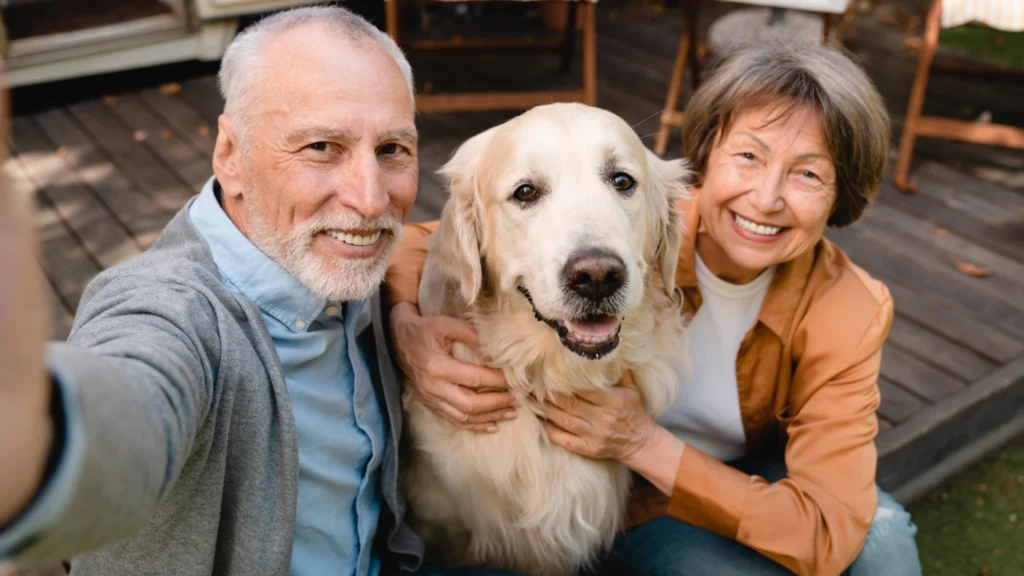
Research shows that owning a dog can help us retain our memory and thinking skills as we age. A study of people over 50 years old showed that those who lived with a dog retained better memory and thinking skills, and less chance of developing dementia, when compared to those who didn’t have a furry friend.20https://www.alzheimersresearchuk.org/news/pet-ownership-could-help-preserve-memory-and-thinking-study-suggests/ Over six years, 1,369 dog owners were assessed for cognitive decline and the researchers discovered that over-65 year olds who owned a dog for five years or more had the best test scores. So, if you want to preserve your brain power, it’s time to give a dog a home!
Dogs on the golden screen
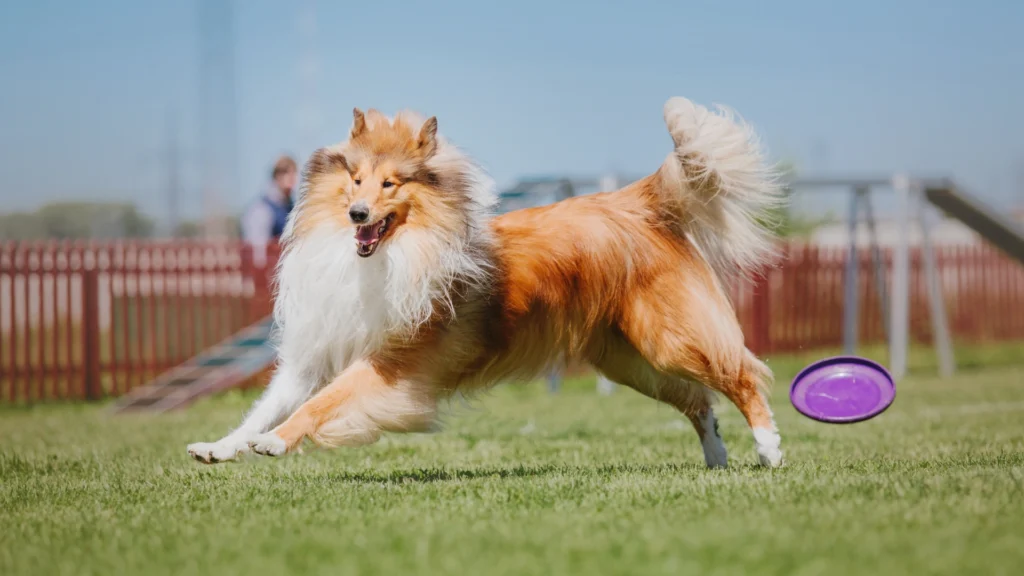
Peoples’ love of dogs has expanded into Hollywood and has been captured on the cinema screen. The special bond between humans and dogs has been represented time and time again in movies and TV shows such as Turner and Hooch, Beethoven, Marley and Me, Old Yeller, and of course Lassie. Other famous dogs include Snoopy, Pluto, Goofy, Scooby Doo and Gromit, and Disney has had blockbuster hits with The Lady and the Tramp and 101 Dalmatians. You can always rely on a story about a dog to tug at the heartstrings!
Dogs in Uganda
Dogs are often used to guard property in Uganda. They are not often cherished as ‘pets’ (pets are animals we share our lives with for pleasure and who we love). There are over 700,000 owned dogs in Uganda, and around 13 per cent of the population shares a home (or yard) with a dog.21https://idpjournal.biomedcentral.com/articles/10.1186/s40249-017-0306-2 In many parts of the world, dogs are increasingly seen as a member of the family, however sadly, for several reasons in Uganda dogs are often viewed as someone to use and their needs often neglected.
Dogs as pets
Many Ugandans struggle to provide for themselves and their family so being able to care for a dog is often impossible. Only wealthier Ugandans living in the cities can afford to keep a dog. Although some people may love and treasure their dog, most of the time they are used as security guards rather than being a beloved member of the family.
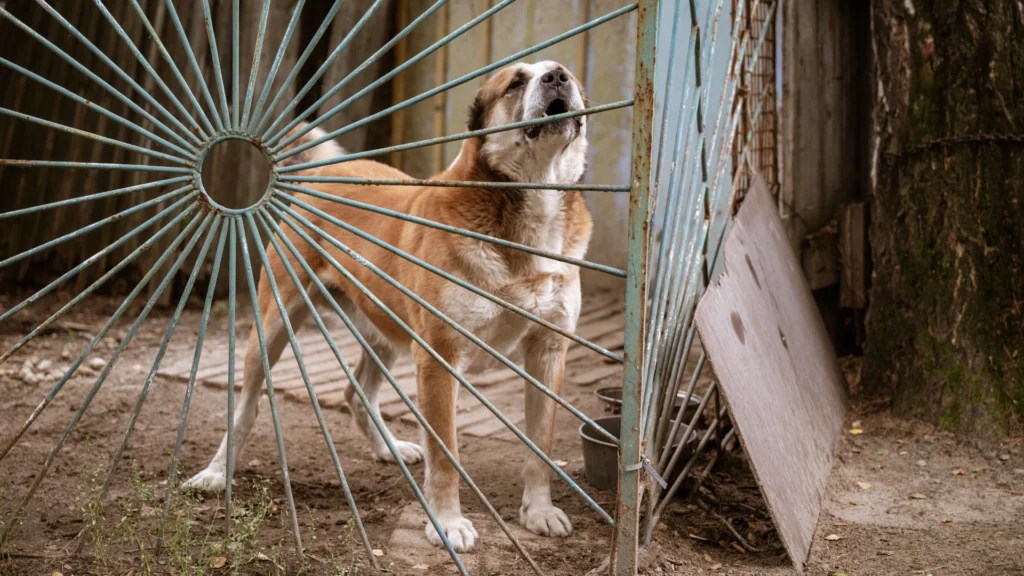
In wealthier homes, large ‘exotic’ dogs, particularly German and Caucasian Shepherds, are kept outside and trained to protect the property by scaring off and attacking intruders. Security dogs have very little freedom. They are usually not allowed inside the house, are often chained up, and never taken for walks. Tethering dogs for long periods is cruel and causes stress, discomfort and injuries due to restricted movement and lack of natural foraging opportunities. Keeping dogs in small enclosures causes physical and severe emotional harm due to lack of exercise and isolation. Some owners even give their dogs drugs, such as opium, to make them more aggressive.22https://www.news.uzh.ch/en/articles/news/2024/rabid-dogs.html Dogs are highly social species who naturally form packs. Dogs need company and to be part of a ’pack’ – whether that pack is people and/or other dogs. Dogs, like all social animals, need to form bonds with others and keeping them on a tether or in a small space without company is very cruel.
In some special cases, dogs are used as a form of therapy for Ugandans dealing with post traumatic stress disorder (PTSD) from being involved in wars. Those struggling with PTSD due to the violence witnessed are paired with dogs who have been abandoned and are in need of a home.23https://www.bbc.com/news/av/world-49409125 The idea is that both parties can help the other heal from a painful past. The acknowledgement of dogs as emotional beings is a stark contrast to how many are treated in the country.
Puppy mills

Because of the growing demand for security dogs, some have seen this as a money-making opportunity and set up puppy mills.24https://www.bbc.com/news/world-africa-16040480 25https://www.monitor.co.ug/uganda/special-reports/how-dogs-have-turned-into-cash-cows-3514842 Puppy mills, also called puppy farms, intensively breed puppies for sale. It is common for dogs in puppy mills to be kept in cramped and squalid conditions, and they are often deprived of the appropriate care. They are not taken for walks, given any affection, or treated for any illnesses.
The larger Ugandan dog breeders train the dog for whatever purpose it is being bought: “security, company, showcasing, and competition”.25https://www.monitor.co.ug/uganda/special-reports/how-dogs-have-turned-into-cash-cows-3514842 Puppies are usually sold at the age of two or three months, and the breeders can get twice as much money for a trained dog than for an untrained one.
Semi-feral and street dogs

In rural villages, dogs are usually semi-feral. (Feral means domesticated animals who have to fend for themselves and become wild or part wild.) They don’t belong to any individual but at times the community may provide food and water for them, and they are allowed to sleep in someone’s yard. It is rare for a dog to have a name and most of the time they are left to fend for themselves. If they become ill or injured – perhaps from being trapped in a snare left out for hunting wild animals, or attacked by a predator – they are unlikely to receive any veterinary care.
In urban areas it is common to see groups of Ugandan street dogs roaming around. Although street dogs come in all shapes and sizes, they are most-commonly medium-sized dogs with short sandy-brown fur and pointed ears.26https://www.wisdompanel.com/en-us/dog-breeds/street-dog-uganda Ugandan street dogs are totally independent, having learnt to survive in difficult conditions.
Challenges faced by dogs in Uganda

Inadequate care
Dogs in Uganda, whether pets, semi-feral or street dogs, face many challenges. With an unstable economy, it is often difficult for dog owners to provide adequate care for their pet. Dogs may not be fed enough, or given food of a high enough quality, and vaccinations against diseases such as rabies, and parasite control often get overlooked. While The World Health Organisation recommends a 70 per cent vaccination rate for effective rabies control, only a mere 10 per cent of domestic dogs in Uganda are presently vaccinated.27https://uniph.go.ug/wp-content/uploads/2021/12/Dying-Rabid-Adopting-Compulsory-Mass-Dog-Vaccination-to-Reduce-Human-Deaths-From-Dog-Rabies-in-Uganda-Policy-brief.pdf
Abandoned at birth
Most dogs are not neutered or spayed so unwanted puppies are often abandoned to fend for themselves on the streets. Semi-feral and street dogs are constantly fighting for their survival – looking for food, avoiding predators, illness and injury.
Poisoning and shooting
Due to Uganda’s low rabies vaccination rate, stray dogs are extremely vulnerable to contracting this devastating zoonotic disease. According to the Uganda National Institute of Public Health (UNIPH), there were an average of 14,865 registered dog bites and 36 human deaths every year from rabies between 2015 and 2020.27https://uniph.go.ug/wp-content/uploads/2021/12/Dying-Rabid-Adopting-Compulsory-Mass-Dog-Vaccination-to-Reduce-Human-Deaths-From-Dog-Rabies-in-Uganda-Policy-brief.pdf Other sources claim that there are close to 500 rabies deaths in Uganda every year.28https://www.frontiersin.org/articles/10.3389/fvets.2022.863526/full#B6 UNIPH also states that 90 per cent of rabies transmissions to humans came from domestic dogs.27https://uniph.go.ug/wp-content/uploads/2021/12/Dying-Rabid-Adopting-Compulsory-Mass-Dog-Vaccination-to-Reduce-Human-Deaths-From-Dog-Rabies-in-Uganda-Policy-brief.pdf
Inadequate care for dogs, such as abandonment, lack of vaccinations and no birth control, has led to Uganda taking extreme and cruel actions against man’s best friend. In Masaka District, both the police and residents have been given permission to brutally gun down stray dogs in the street.29https://www.monitor.co.ug/uganda/news/national/stray-dogs-police-launch-shoot-to-kill-operation-1722250
In other places, dogs are poisoned with strychnine.22https://www.news.uzh.ch/en/articles/news/2024/rabid-dogs.html In Tororo District, stray dogs and cats had somehow been allowed to over-run a hospital, due to inadequate fencing around the grounds.30https://www.monitor.co.ug/uganda/news/national/vets-okay-poisoning-as-stray-dogs-invade-hospital-1867780 To ‘solve’ the problem, the hospital was given permission to poison the dogs – a tragedy that could have been avoided with simple preventive measures such as investing in more secure fencing.
Strychnine poisoning causes muscle spasms and cramps, agitation, heightened awareness and responsiveness, eventually leading to respiratory failure and death. The symptoms are so similar to rabies that they are often mistaken for the other. Without a brain biopsy, there is no way of knowing if a bite came from a dog with rabies or one that had been poisoned. And because strychnine can lead to aggressive behaviour, the poisoning may be causing more dog bites than it is preventing.22https://www.news.uzh.ch/en/articles/news/2024/rabid-dogs.html
Dog meat
To make matters worse, although illegal and uncommon, the dog meat trade is still a serious concern in Uganda. In 2019, a Ugandan man was arrested for trapping and slaughtering dogs and selling the meat to eateries in Mbarara town.31https://www.monitor.co.ug/uganda/news/national/man-arrested-while-slaughtering-dogs-for-meat-1821010 The slaughter of dogs for meat is often done in unhygienic conditions, posing a high risk of zoonotic infections. Thankfully, most Ugandans are horrified at the thought of eating a dog32http://news.bbc.co.uk/1/hi/world/africa/7540805.stm, but as is the case with bushmeat from monkeys, it is not always clear what meat is being sold, bought and eaten.
Many of us know that a loving relationship with a dog can be one of the most rewarding experiences in life. Unfortunately, in Uganda man’s best friend is trapped in a world of neglect, oppression and abuse, in which it is the helpless victim but treated like the criminal. Dogs deserve better!
References
References
- 1
- 2
- 3
- 4
- 5
- 6
- 7
- 8
- 9
- 10
- 11
- 12
- 13
- 14
- 15
- 16
- 17
- 18
- 19
- 20
- 21
- 22
- 23
- 24
- 25
- 26
- 27
- 28
- 29
- 30
- 31
- 32

